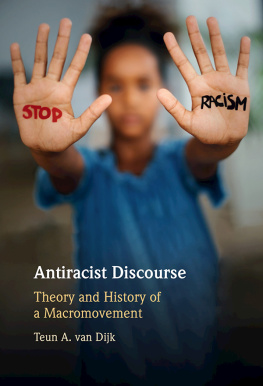Copyright 2022 by Ibram X. Kendi
All rights reserved.
Published in the United States by One World, an imprint of Random House, a division of Penguin Random House LLC, New York.
One World and colophon are registered trademarks of Penguin Random House LLC.
She noticed. First once or twice a day. Soon, two or three times a day.
It was March 2016. We lived in central Florida. Sadiqa had been pregnant with our child for twenty-three weeks. She did not have any pain. She did not notice any bleeding. But the discharge worried her. It was odd. It kept coming.
Three days after it started, Sadiqa told me about it. I could tell she felt uncomfortable sharing. We live in a body-shaming society where even pregnant women are socialized to be embarrassed about their bodies. But as a physician, Sadiqa eased her discomfort by medicalizing its source, by observing and reporting her clinical symptoms as she would a patients. She called her obstetricians office not long after she opened up to me and told a nurse about the discharge, its increasing volume, and her increasing worry.
Any other symptoms? the nurse asked.
No, not really.
Well, I think its fine. Theres nothing to worry about. People have symptoms like that all the time.
Not Sadiqa. It was the first symptom like that shed experienced during the six months of her first pregnancy. And she was not reassured by the nurse. Now she had a new worry: Is something wrong with me for thinking there is something wrong with me? she thought. Am I paranoid? Foolish?
The world has a knack for causing women to question their sanity, and those questions fall especially heavily on pregnant women, and pregnant Black women perhaps most of all. The self-doubt arises from what microbiologist Sasha Ottey terms health-care gaslighting.
In the end, Sadiqa listened to her body. But medical workers too often dont listen to Black women.
The medical establishments disregard for Black women is one of the reasons Why Americas Black Mothers and Babies Are in a Life-or-Death Crisisthe headline on the New York TimesMagazine story by Linda Villarosa that broke open this crisis in 2018. That article opens with medical providers brushing aside pregnant Simone Landrums complaints in Louisiana around the same time they brushed aside Sadiqas complaints in Florida. Landrum had been complaining of spotting and then bleeding, pain, and fatigue, but doctors ignored her until it was too lateshe nearly died delivering a premature, stillborn baby.
Even wealthy and powerful Black women like Serena Williams have faced similar disregard. In 2017, the day after giving birth by C-section to her daughter, Olympia, the legendary tennis player struggled to breathe. Williams knew it was a trademark symptom of a blood clot because she had a history of clots in her lungs. Williams also knew what the next step should be: She asked for a CT scan and a blood thinner. But the nurse told her she was wrong, that the pain medication had confused her. An ultrasound was performed on her legs instead. After finding nothing, medical workers finally performed a CT scan of her chest, and found several small blood clots in her lungs. The clots caused Williams to cough out the stitches from her C-section. While repairing the stitches, doctors discovered a hematoma in her abdomen.
I didnt expect that sharing our familys story of Olympias birth and all of the complications after giving birth would start such an outpouring of discussions from womenespecially Black womenwho have faced similar complications and women whose problems go unaddressed, Williams wrote in 2018. EVERY mother, regardless of race or background, deserves to have a healthy pregnancy and childbirth.
Indeed, every mother deserves reproductive justice. How a society treats pregnant women is a metaphor for how a society raises its children. Every year, about seven hundred American women die from pregnancy, the highest maternal mortality rate among rich countries in the world. Two-thirds of the annual deaths from pregnancy are considered preventable. And certainly, the racial disparities in those deaths are preventable.
Black women in the United States are more than three times more likely to die from pregnancy than White women (even as the death rate for White women in the United States is absurdly high). In 2019, a Centers for Disease Control study found that between 2007 and 2016 the pregnancy-related death rate for Black women was 40.8 per 100,000 births. For Native women, it was 29.7; Asian13.5; White12.7; and Latinx11.5 per 100,000 births. The racial disparities were even wider among older women and women with college degrees. Pregnant Black and Native women over thirty years old were four to five times more likely to die than White women over thirty years old. The pregnancy-related death rate for Black college graduates was 5.2 times higher than for their White counterparts. In 2016, Sadiqa had a medical degree and middle-class status, had just turned thirty-seven, and worked in the same hospital that provided her maternal care. But education, social status, wealth, age, access to premium carenone of this can assure that medical providers take the concerns of Black women seriously.
This is a problem of racism. Black mothers (10.2 percent) are more than twice as likely as White mothers to receive later or no prenatal care. Black women are more likely to be uninsured outside of pregnancy, and to lose coverage during the postpartum period. Black women are four times more likely than White women to live in neighborhoods facing high air pollution, a risk factor for preterm births. The hospitals where Black mothers give birth tend to have fewer resources and less expertise than where White mothers typically deliver, even as Black mothers tend to have more life-threatening conditions and complications.
And that imbalance in resources and expertise matters. Lets face it: We live in societies where the mothers with the greatest needs commonly give birth in the hospitals with the greatest needs. Just like the children with the greatest needs commonly go to the schools with the greatest needs. Just like the families with the greatest needs commonly live in the communities with the greatest needs. This is the startling injustice of racial inequity. And this is all considered normal. Raising kids in this structure of racial inequity has become very normal. Raising kids to see all this racial inequity as normalis so very normal.
Days after opening up about her discharge, Sadiqa went to work at the local childrens hospital. On her feet for hours, she shuffled between small rooms and sick kids and fearful parents and wired nurses and learning trainees. Working in a pediatric emergency department is taxing on the body, let alone the pregnant body. Every time she went to the bathroom during the shift, she noticed the discharge.

















